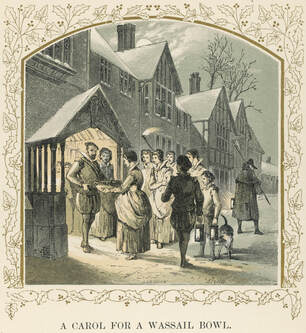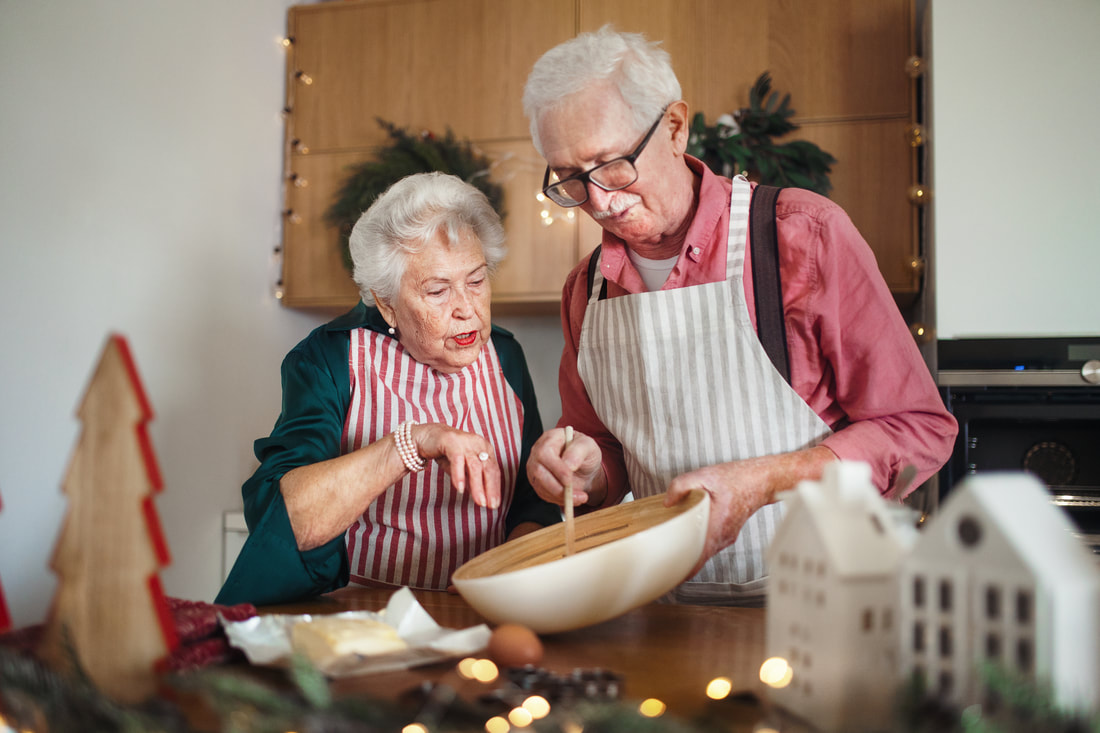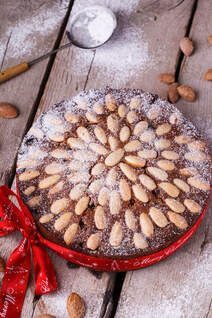The rose gold tinge of their shell is so linked to December, in my mind. Even with my birthday being in October, and many of the Christmas gifts being in the shops in September I didn't mind. There was more chance I'd get an exciting birthday present because of it. In those heady days of the 70s, as a child, Halloweven wasn't really an event in South London. So, it would be Christmas presents on sale September / October, then fireworks late October to 5th November and suddenly all the shops had Christmas decorations. If you had an artificial tree (normally silver tinsel!) you could put it up in early December, but for those of us who had a real tree, then it would be week before Christmas.
For those, who, like my father gate keep when Christmas can start (normally after their birthdays), it smacks of those Bridezillas who won’t let others do anything during their wedding year. We each need to choose when our own Christmases start for us.
0 Comments
 Early 20th-century New Year's resolution postcards Early 20th-century New Year's resolution postcards The idea of making New Year's resolutions goes back to ancient times when people would make promises to the gods to improve their behaviour or to atone for past misdeeds. The ancient Babylonians are believed to be the first civilization to make New Year's resolutions, and they would make promises to their gods to pay their debts and return borrowed objects. In ancient Rome, the custom was to would make promises to the god Janus, who was the god of beginnings and endings. They believed that by making resolutions and keeping them, they could bring good luck and prosperity in the new year. The modern tradition of making New Year's resolutions has its roots in these ancient customs. Today, people around the world make resolutions as a way of setting goals and making positive changes in their lives. Some common New Year's resolutions include resolving to lose weight, quit smoking, save money, or spend more time with family and friends.  In 2020, the New York Post reported that: Feb. 1 is the day we call it quits on our New Year’s resolutions, according to new research. A new poll of 2,000 Americans found that it takes just 32 days for the average person to finally break their resolution(s) — but 68% report giving up their resolutions even sooner than that. In fact, one in seven Americans never actually believe they’ll see their resolution through in the first place. The top reason our resolutions don’t stick is a self-aware lack of discipline (52%), followed by busy schedules and lacking the proper time to see them through (43%). Nowadays, people will often decide to take part in national initiatives in order keep their motivation up. After the excesses of Christmas Dry January or Veganuary may seem attractive. And you will start to see posts on social media where people will tell you all about what they are planning on doing. The idea is that by making your resolution public, you are more likely to keep to it as it puts peer / social pressure on you. 12% of all new gym members join in January [IHRSA - 2019] but by February the memberships are normally gathering dust in someone's wallet. Studies show that only about 25% of those who make resolutions fail at the 1 week mark, with another 40% reporting failure at 1 month. And those who fail at keeping their resolutions experience lowered self-esteem, sadness and depression. My 2023 Resolutions So, I've decided to make some resolutions that I can keep and that will help me with my self-esteem, happiness and wellbeing. 1. Be creative When you battle with depression, anxiety and, in my case, imposter syndrome, then it's easy to just stop creating. So, for 2023, I am resolving to enjoy being creative. There are so many free knitting and crochet patterns out there that you can become overwhelmed with what to choose for your next project. Looking at my fabric stash there are so many projects I could make but I just walk away and don't make anything. I'm going to go with the flow. I look at my Ravelry projects and it is reassuring to see all the things I've knitted and crocheted these past few years. I learnt to crochet in March 2013 when I made 72 flowers as part of a flower bombing at the Radcliffe Camera. Then, in 2017 I taught myself to knit. I have also made and taught lacemaking since 1988. Creating things gives me an immense sense of satisfaction. Not just from the finish item, but from the process of choosing what to make and that act of creation. This year I've made things that I've liked the look of, used interesting materials or taught me a new skill. I've made things using my stash and also made things where I've bought the yarn and materials for. I'm going to go into 2023 and make things that bring me pleasure. 2. Be a little selfish I have been conditioned to put other people first. My father used to tell me how I was born to look after him in his old age ... After all, that's why you have children! So, in 2023, I'm going to be a little bit selfish. At my work, I'm encouraged to put time in my diary each month for self-study and professional development. I'm going to do that in my personal life. I'm going to put time aside to read, to make and to listen to music. 3. Do little things to make you happy It's likely that my sister won't remember this, but she gave me a piece of advice just before my 30th birthday. She told me to always have a bottle of champagne in the fridge so that I had a cold bottle ready to celebrate anything or to cheer myself up. So, I bought a bottle and put it in my fridge on my 30th birthday. Since then, there has been a bottle of fizz in my fridge until I took it out the week before Xmas when the fridge broke. It's not the same one, I just replace it when it gets used. I don't drink much these days. I've just got out of the habit. But on the last working day before Christmas, we had a Christmas Quiz and drinks. I treated myself to a can of Pimms and it was wonderful to relax with my colleagues over video, answers silly quizzes and have a drink together. Each night, just before I go to bed, I have a quick spritz of Eau de Jardins (Clarins) as I love the smell and it reminds me of good times with my sister. So, I'm going to keep a stash of my favourite fruit tea to indulge myself when I want a pick me up and I'm not going to save the posh shower gel anymore. I'm going to use it as a treat once a week. Some of this year's makes
 Wassail is a traditional drink that is associated with the Christmas season in many parts of the world. A hot, spiced punch, wassail can be made from a variety of ingredients, including apples, oranges, spices, and ale or wine. Traditionally, it was served from a communal bowl and was meant to be shared among friends and family. The origins of wassail can be traced back to ancient civilizations, where it was used as a way to celebrate the winter solstice and welcome in the new year. In the Middle Ages, wassail was a popular drink during the holiday season, and it was often served at Christmas feasts and celebrations. In some parts of the world, it is traditional to go wassailing, which involves visiting friends and neighbours and singing carols while carrying a bowl of wassail. The tradition of wassailing is still practiced in some areas and is seen as a way of spreading good cheer and celebrating the holiday season. If you fancy a warm, spiced drink for the New Year, but prefer something non alcoholic, then I highly recommend this recipe that was developed for me, when I ran the cook school, by a wonderful lady called Judith. Judith's Fruit Punch  Ingredients
Method
Cooks Tip
|
Why the Christmas Lace Notes?2023 has come along and this is the second year of my lace notes. All kicks off on 15th November with the first of this year's Chrismas movies. One a day, every day until Christmas. Archives
December 2023
Categories
All
|






